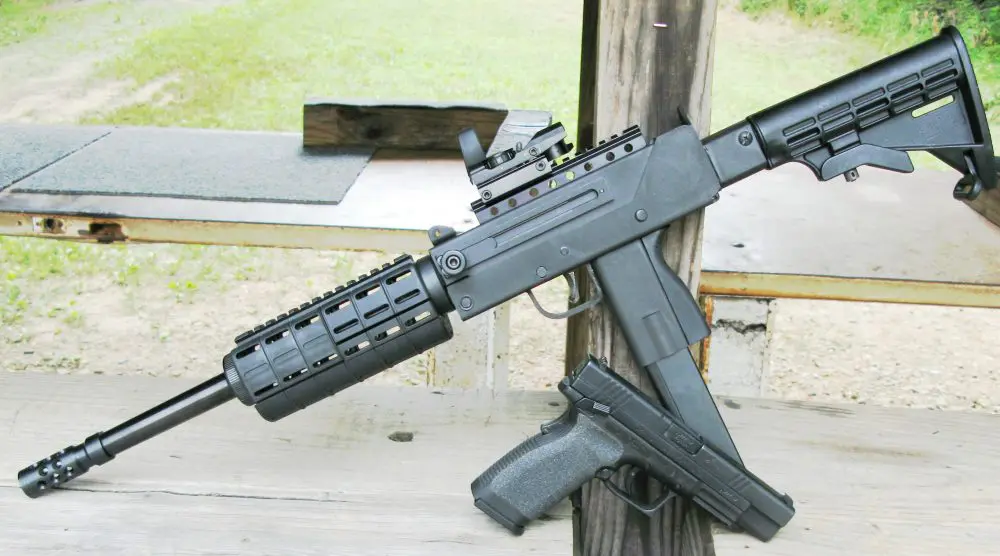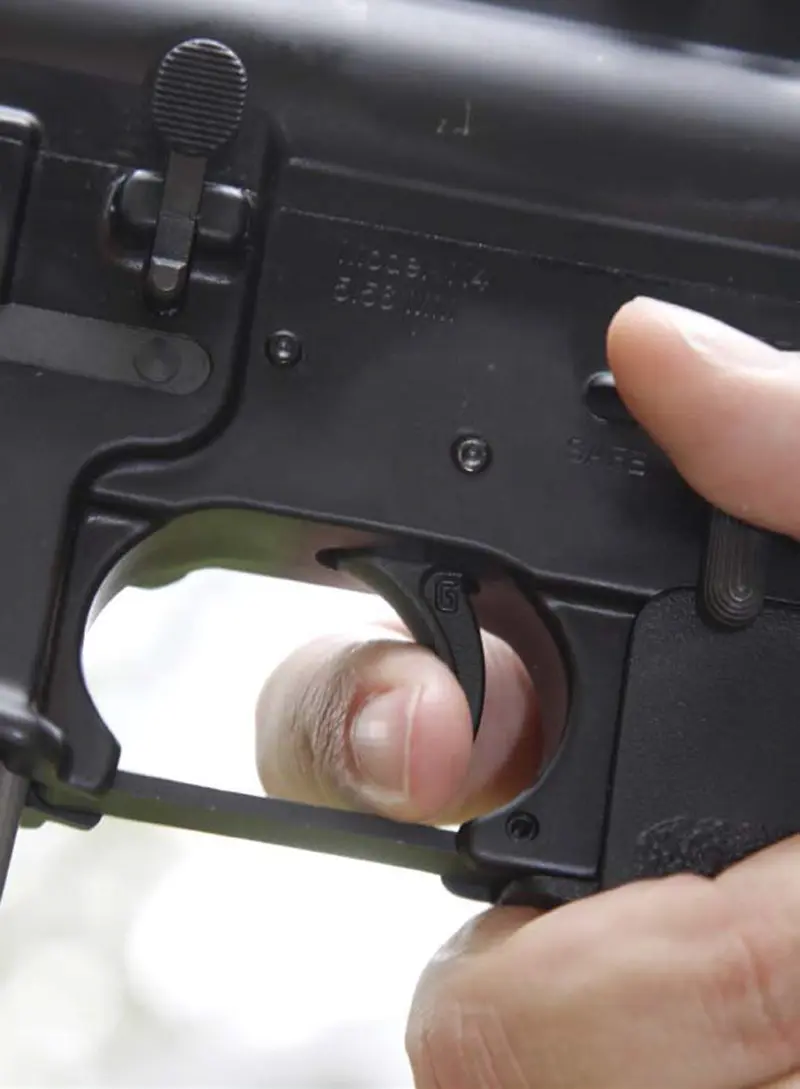

However, most AR shooters have had a legitimate gripe that there had to be a better way.
A number of times lately, I found myself in situations where the shot I was trying to make should have been achievable, but I was struggling to get the trigger to break cleanly at speed to accomplish the task.
Triggers are always a convenient excuse for those so minded, but I was beginning to wonder if I had actually reached the point where the triggers in place on several of my carbines were holding back my performance.
Despite the saturation of the AR series and the perfecting of many of its components, there has been a fairly well-accepted diametric choice: A great breaking trigger that is unlikely to stand up to hard use over time, or a reliable release that falls well short in quality of what was on your granddaddy’s M1 Garand.
Recently several companies have claimed to have mated the two choices in aftermarket units. One such company is Geissele Triggers, known for quality and being the triggers most often found in national champions’ high-powered rifles.
I had heard great things about their Super Semi-Automatic (SSA) trigger from a number of sources who are not easily impressed and are the opposite of early adopters. Since it was pitched as a great breaking trigger meant for hardcore service usage, I was ready to give it a try.

Table of Contents
THE SSA
The Geissele unit consists of parts that are recognizable as variants of a standard GI trigger, however I immediately noticed differences in quality and in the exact shape and configuration of the engagement surfaces between sear and hammer.
Geissele uses cryogenically treated tool steel to hold the precise contact edges, and both the hammer and trigger are individually mated and serial numbered by hand to ensure best performance.
The contact surfaces have been reengineered to cut the standard sear engagement surface area by half, removing the creep or roll seen in many AR triggers. The unit has a clear instruction sheet, and installation was simple and accomplished without any special tools in less than ten minutes on the kitchen counter.
Once installed, there was a noticeable difference in both weight and crispness. I probably looked visibly surprised, and by the third or fourth dry snap, I could feel the grin stretching across my mug. I was anxious to go live and see what the SSA would do.
In feel, there is no direct comparison to describe the let off—it is a very distinct and light travel through the first stage coming to resistance and a crisp, easy break with almost no movement for the second stage. Geissele rates the unit at 4.5 pounds straight through or 2.5 for the second stage. It feels closer to some vintage .22 autos with great triggers than anything else that people usually relate trigger pull to.
These units are not inexpensive, so the natural question is, “Is it worth it?”
Asking that same question myself, I wanted to run the trigger hard and collect comparative data in recognizable situations. This way a shooter could look at the performance difference and have a starting point for a decision, rather than read a review that predictably said, ”The trigger felt great.”
PRECISION
I was fortunate in that I had just completed a session where I was testing the accuracy of a certain rifle. I had felt that the typical seven-pound service trigger was not letting me squeeze the best accuracy out of an obviously quality barrel, despite a great Leupold Mid Range/Tactical scope, rock solid LaRue SPR mount, and solid rest.
Groups with the stock trigger had averaged about .92 inch at 100 yards. With the SSA in place (and not even broken in), the first three groups with the same Black Hills 77-grain OTMs averaged .75 inch. The best group fired with the new trigger went into .62 inch. The numbers reflect a pure accuracy difference of .17 MOA, or just over an inch at 600 yards, which is probably insignificant.
However, what is not reflected is the difference in effort required to produce those groups. The ¾ MOA groups with the SSA were almost easy, whereas the stock trigger had taken the best I had to offer to get the shots to break up to the barrel’s potential.
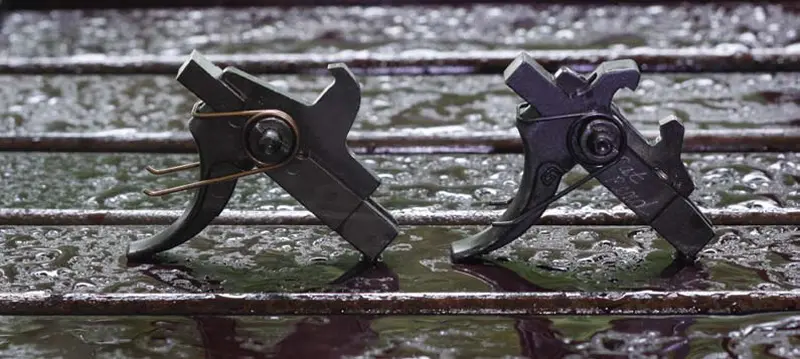
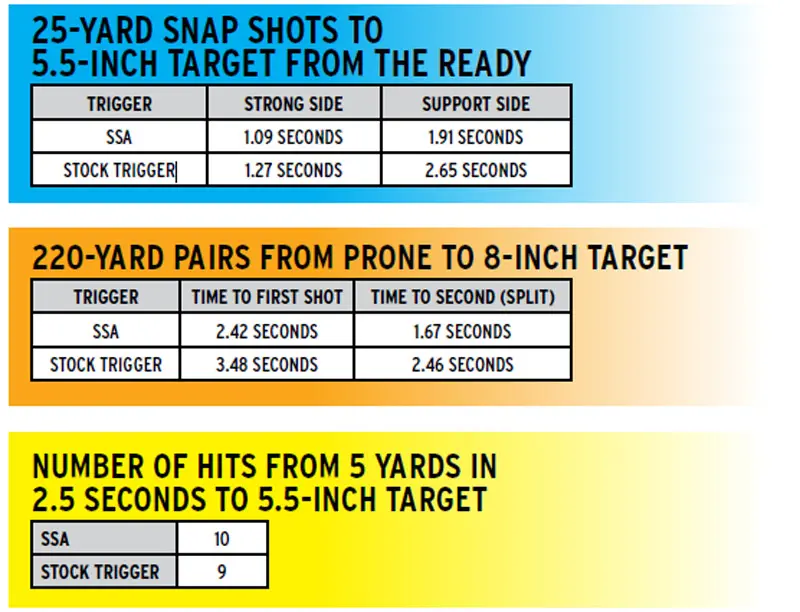
PRACTICAL MID RANGE
I next set up a drill to represent the difference in speed to anchor a vitalssized target at 220 yards. The drill was shot on an eight-inch target from prone with a timer, measuring the time to break the first shot and then the time to recover, reset the trigger, and break the second (split time). The shooting was accomplished from magazine monopod prone with the aid of a tightened VTAC sling.
The SSA allowed the target to be struck in 2.42 seconds on average. Follow- up shots took an average of 1.67 seconds. Switching lowers to a similar receiver with the GI trigger installed, the first shot broke at an average time of 3.48, while the mean split time was 2.46 to achieve similar hits.
This equaled a difference of just over one full second to the first hit and over .75 second to the second shot. There was no significant difference in the quality of shot placement between the two triggers. I can think of quite a few dynamic scenarios in which a second might mean the difference between success and an awful sinking feeling.
SNAP SHOOTING
The next drill was meant to more closely replicate the more common usage of most service carbines. A 5.5-inch target was placed at 25 yards and the timer used to record the amount of time taken to achieve a hit from the standing ready position. For this drill, the Leupold MR/T was switched out for an Aimpoint T1 in LaRue Tall mount.
With the Geissele unit on board, the carbine averaged 1.09 seconds to hit the 5.5-inch target, with several attempts coming in under a second. I “felt” fast and thought the trigger was making me look pretty good.
Warmed up, I switched the lower out for the one equipped with the milspec trigger and continued the drill. The hits were all there as well, this time averaging 1.27 seconds. The difference worked out to just under a fifth of a second— noticeable but not exceedingly so from the shooter’s perspective. However, keep in mind that the .16-second difference is about the same as a max speed split time for most shooters, so could easily equal an additional incoming round from downrange.
I was curious how that would translate to the support side, so I cued up the same drill and ran it lefty. The SSA averaged 1.91 seconds to get good hits, while the stock trigger took some extra work from the less experienced finger and rounded out at 2.65. The nearly .75-second difference was very distinct from the shooter’s end and represented the significant difference in effort to get the hit with the heavier trigger from the support side.
A total of 2.65 seconds is a long time in situational reference, allowing even the village idiot to have a fair chance of getting in some licks with his AK.
MAXIMUM SPEED
To attempt to measure the performance difference up close and at speed, the Viking Tactics Half and Half drill was used. In this drill, 10 shots are fired to a 5½-inch bull from 20, 10, and five yards with a par time in seconds of half the distance in yards. Thus, the goal is to get 10 hits in five seconds from 10 yards, or 2.5 seconds from five yards.
With the SSA in place, it was no problem making par with all hits from all three yard lines. In fact, the crisp fourpound break facilitated my personal best of 2.35 from five yards with 10 solid hits. Split times up close ranged from .16 to .19 second.
Switching over to the standard trigger mechanism, I was only able to make the par from 20 yards, just missing it at 10 and consistently getting nine or fewer out of the ten hits at five yards. The split times ranged from .19 to .25 second. This is fairly representative of my usual performance on this drill with a service-grade trigger.
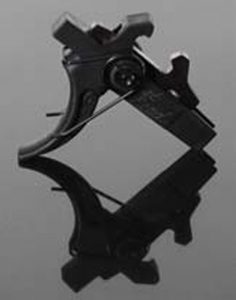
MISC SHOOTING
Over several training sessions, I ran the SSA-equipped carbine through a variety of scenarios and drills. In general, I felt it extended my “on demand hits” range by about 25%. In other words, targets that are normally on the edge of my ability and that I can “probably” hit with some effort and a good position I could hit rapidly and with certainty. The better break made hits on the move substantially easier. Ditto for shooting from awkward positions to demanding targets. Shooting stationary to relatively simple targets, there was negligible advantage unless trying to shoot at maximum speed.
RELIABILITY
The unit functioned perfectly throughout all shooting, and ignition was 100% on all types of ammunition from milspec ball to match rounds. Over 800 rounds were fired, and probably half again as many dry-fire releases. This by no means establishes that the unit is bulletproof, but its simplicity of design and better steel look promising. Geissele reports testing units to 250,000 cycles with no ill effects.
That there are none of the set screws, flywheels, reduced power springs, or snake oil used to accomplish the great feel of the trigger is very encouraging. After this usage, and with moly grease lightly coating the contacts, a match armorer weighed the breaks. The unit had settled in at 4.13 pounds straight through, and 2.27 pounds to the precision release of the second stage.
WHO IS IT FOR?
The SSA seems ideally suited to any carbine user who may be required equally to employ his weapon in a precision role as much as a basic close- to midrange weapon. Any user who pushes his performance hard will likely notice an immediate upswing in speed and/ or effective range, especially from challenging positions or the support side.
Organizations that are spec’ing rifles should consider that Geissele will custom tune the pull weights of the two stages upon request. Just recently they put together a run that had a fourpound first stage matched to a twopound release to meet a department’s 5.5-pound minimum.
Shooters who are enthusiasts may find that this is one of the rare instances when it may actually be possible to buy a performance boost.
The casual shooter may not notice immediate benefits but will likely enjoy shooting that carbine a whole lot more and may start hitting a little more often.


